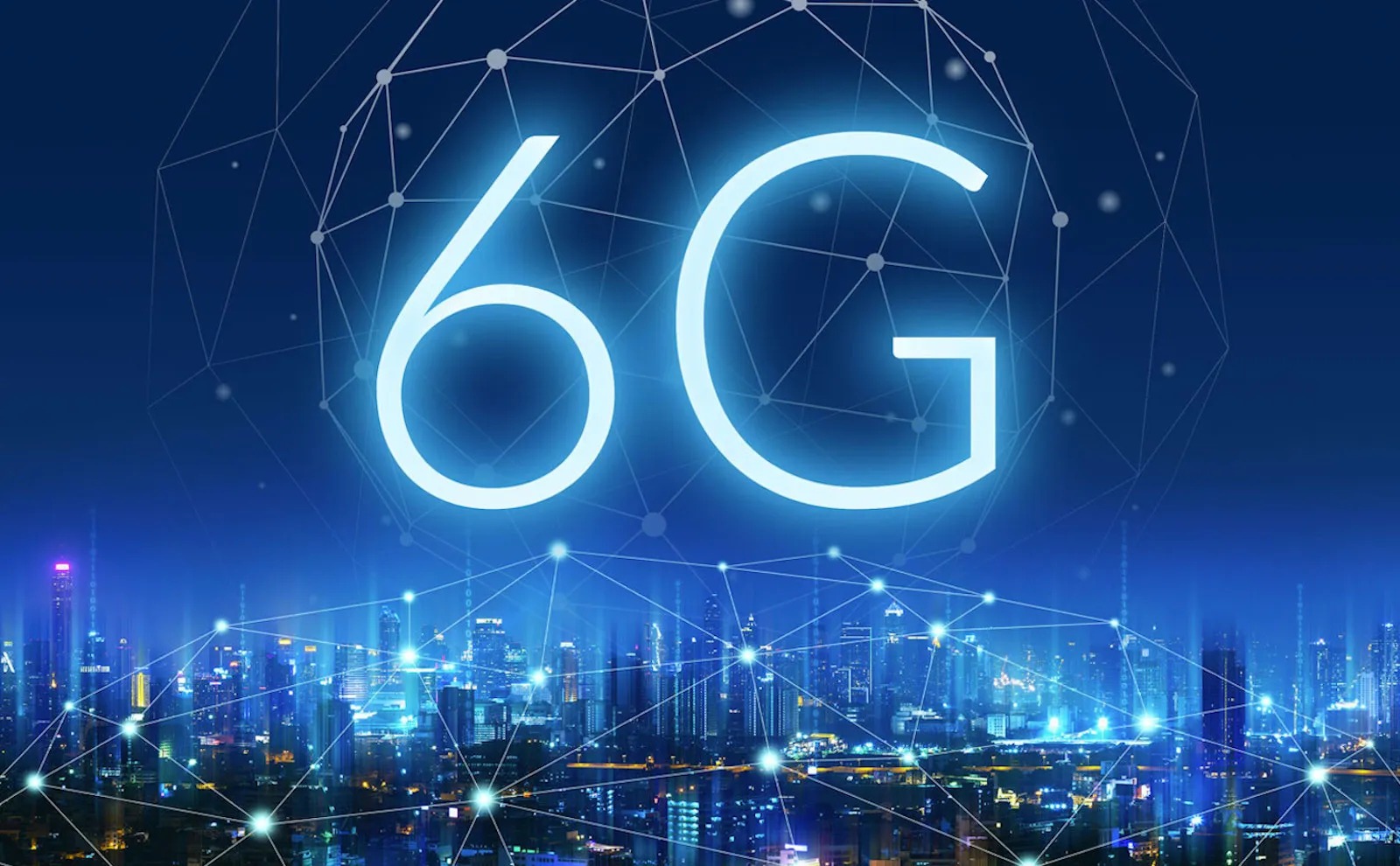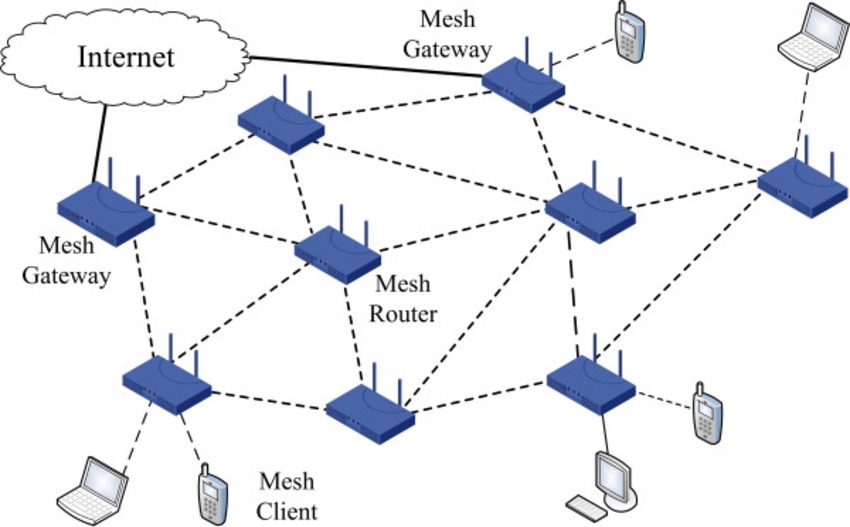
6G Networks: How Close Are We Really?
"Exploring the Future of Connectivity: 6G networks promise to revolutionize communication with ultra-high-speed terahertz data transfer, AI-driven intelligent infrastructure, immersive holographic experiences, and real-time tactile interactions. This article examines the current development status, global progress, potential applications, challenges, and the timeline for deployment, highlighting how close we truly are to the next generation of mobile technology."
✨ Raghav Jain

Introduction
The evolution of mobile networks has been a journey of remarkable technological advancements. From the early days of 1G's analog voice transmission to the high-speed data capabilities of 5G, each generation has brought transformative changes. Now, as we stand on the cusp of the next frontier, the question arises: How close are we to realizing 6G networks? This article delves into the current state of 6G development, its envisioned capabilities, the challenges ahead, and the timeline for its deployment.
What Is 6G?
6G, or the sixth generation of mobile networks, is envisioned as a significant leap forward from 5G. While 5G focuses on enhanced mobile broadband and ultra-reliable low-latency communication, 6G aims to integrate advanced technologies to create a more intelligent, immersive, and ubiquitous connectivity experience. Key features anticipated in 6G include:
- Terahertz (THz) Spectrum Utilization: Leveraging higher frequency bands to achieve ultra-fast data rates.
- Integrated Sensing and Communication (ISAC): Combining communication capabilities with environmental sensing for applications like autonomous vehicles and smart cities.
- Artificial Intelligence (AI) and Machine Learning (ML) Integration: Enabling networks to self-optimize and predict traffic patterns.
- Holographic and Tactile Communication: Facilitating immersive experiences through technologies like holograms and tactile internet.
- Ultra-Low Latency and High Reliability: Supporting real-time applications such as remote surgery and industrial automation.
Current Status of 6G Development
As of 2025, 6G is still in the research and development phase. However, significant progress has been made globally:
- Standardization Efforts: Organizations like the International Telecommunication Union (ITU) and 3rd Generation Partnership Project (3GPP) are working on defining the technical standards for 6G. The ITU's IMT-2030 framework outlines the vision and requirements for 6G networks. (Wikipedia)
- Pilot Projects and Trials: Countries such as the United States, China, and South Korea have initiated pilot projects to test 6G technologies. For instance, China launched a satellite to test terahertz communication, a key component of 6G.
- Academic and Industry Collaboration: Universities and tech companies are collaborating on research projects focusing on areas like AI-driven network management, advanced antenna systems, and quantum communication.
Timeline for 6G Deployment
The commercial deployment of 6G is projected to begin in the early 2030s. However, the timeline may vary by region:
- Early Trials: Initial trials and demonstrations are expected to take place between 2025 and 2027.
- Standardization Completion: The finalization of global standards is anticipated around 2028.
- Commercial Rollout: Full-scale commercial deployment could commence between 2030 and 2032, depending on regulatory approvals and infrastructure readiness.
Challenges in 6G Development
Despite the promising outlook, several challenges must be addressed before 6G can become a reality:
- Spectrum Allocation: Securing the necessary frequency bands, especially in the terahertz range, poses regulatory and technical challenges.
- Infrastructure Overhaul: The deployment of 6G will require significant upgrades to existing network infrastructure, including the installation of new base stations and antennas.
- Energy Consumption: Higher frequencies and advanced technologies may lead to increased energy consumption, necessitating the development of energy-efficient solutions.
- Security and Privacy: The integration of AI and the vast amount of data generated by 6G networks raise concerns about cybersecurity and data privacy.
- Global Coordination: Achieving global consensus on standards and regulations is crucial for seamless interoperability across borders.
Potential Applications of 6G
The capabilities of 6G are expected to enable a wide range of applications:
- Smart Cities: Enhanced connectivity will support intelligent traffic management, energy-efficient buildings, and public safety systems.
- Healthcare: Remote diagnostics, telemedicine, and robotic surgeries will benefit from ultra-reliable and low-latency networks.
- Transportation: Autonomous vehicles and drones will rely on real-time communication for navigation and coordination.
- Entertainment: Immersive experiences such as holographic concerts and virtual tourism will become mainstream.
- Industry 4.0: Manufacturing processes will be revolutionized with real-time monitoring and automation.
India's Progress Towards 6G
India is actively participating in the global 6G development efforts:
- Research Initiatives: Institutions like the Indian Institute of Technology (IIT) and the Indian Institute of Information Technology (IIIT) are conducting research on 6G technologies, including AI integration and spectrum management.
- Government Support: The Department of Telecommunications (DoT) has established a 6G task force to coordinate national efforts and collaborate with international bodies.
- Industry Collaboration: Telecom operators such as Bharti Airtel and Reliance Jio are partnering with global tech companies to test and develop 6G technologies.
The development of 6G networks represents the next monumental leap in the evolution of mobile communication, following the transformative introduction of 5G, which itself brought ultra-fast broadband, low-latency applications, and the promise of a hyper-connected world; however, while 5G laid the groundwork for smart cities, autonomous vehicles, and immersive digital experiences, the anticipated 6G networks aim to go far beyond by introducing a level of intelligence, speed, and connectivity that could redefine human interaction with technology, society, and even the environment, as they are expected to operate in the terahertz frequency spectrum, enabling unprecedented data transfer rates potentially exceeding hundreds of gigabits per second, which would allow for seamless holographic communication, real-time tactile internet experiences, and fully immersive virtual and augmented reality environments that are integrated into daily life, providing a paradigm shift not only in personal communication but also in industrial automation, healthcare, education, entertainment, and transportation systems; central to 6G’s promise is the integration of artificial intelligence and machine learning directly into the network infrastructure, allowing the network to self-optimize, predict traffic congestion, and dynamically allocate resources, creating an environment where networks are no longer passive conduits of information but intelligent entities capable of anticipating user needs, adjusting to environmental conditions, and ensuring ultra-reliable, low-latency communication for critical applications such as remote robotic surgery, autonomous vehicle coordination, and large-scale disaster response, while also enabling the development of smart cities where everything from traffic flow to energy consumption, waste management, and public safety systems can be monitored and controlled in real-time, powered by highly dense sensor networks and advanced edge computing; globally, the race to develop 6G is intensifying, with countries like China, South Korea, Japan, the United States, and members of the European Union investing heavily in research, standardization, and pilot testing, with organizations such as the International Telecommunication Union (ITU) and the 3rd Generation Partnership Project (3GPP) actively defining the framework for the International Mobile Telecommunications (IMT-2030) standards, which outline the capabilities, requirements, and performance benchmarks necessary for true 6G implementation, while private enterprises, universities, and research institutions collaborate on areas ranging from terahertz antenna design, advanced MIMO (multiple-input multiple-output) systems, quantum communication, and integrated sensing and communication technologies, to energy-efficient network architecture that addresses the inevitable increase in power consumption associated with ultra-high-frequency operation; despite these advancements, significant challenges remain, including the allocation and regulation of the terahertz spectrum, the enormous infrastructure investment required to deploy dense networks of base stations and satellites, cybersecurity risks inherent in an AI-driven and hyper-connected environment, and the complex international coordination required to ensure interoperability across borders, as well as the need to create sustainable solutions to reduce the environmental impact of 6G networks, which may demand new materials, cooling systems, and energy management technologies, highlighting that while technical prototypes and early trials are underway, commercial deployment is projected to remain a decade away, possibly in the early 2030s, with phased rollouts likely beginning in highly industrialized regions and gradually expanding globally, and in countries like India, research initiatives led by institutions such as the Indian Institutes of Technology (IITs), IIITs, and collaboration with telecom operators like Reliance Jio and Bharti Airtel, supported by the Department of Telecommunications (DoT) through a dedicated 6G task force, demonstrate a commitment to contributing to the global 6G ecosystem, while emphasizing indigenous innovation and capacity building in AI, spectrum management, and next-generation network infrastructure, which could not only enhance India’s technological sovereignty but also position the country as a major player in the global 6G landscape; moreover, the potential societal and economic impact of 6G cannot be overstated, as it promises to catalyze new industries, reshape existing ones, and provide unprecedented opportunities for connectivity in underserved regions, bridging the digital divide, and enabling education, healthcare, and economic development in ways that were previously unimaginable, all while supporting applications that rely on instantaneous and accurate data exchange, from precision agriculture using drones and AI analytics to remote industrial operations in hazardous environments, and even fostering new forms of social interaction and entertainment through holographic meetings, concerts, and collaborative virtual workspaces, which would redefine human experiences and social interactions, thus making 6G not merely an incremental technological upgrade, but a transformative leap toward a hyper-connected, intelligent, and immersive global ecosystem that integrates seamlessly into everyday life, reshaping how humans communicate, work, learn, and entertain themselves, creating an era where connectivity is ubiquitous, instantaneous, and deeply intelligent, ultimately reflecting humanity’s continuous pursuit of innovation, efficiency, and enhanced quality of life through the convergence of cutting-edge technology, visionary engineering, and global collaboration, while also challenging governments, corporations, and societies to thoughtfully address ethical, security, and environmental considerations that accompany such profound technological evolution, ensuring that the benefits of 6G are realized inclusively and sustainably across the world.
The development of 6G networks represents the next monumental leap in mobile communications, building upon the transformative foundations laid by 5G, which introduced ultra-fast broadband, low-latency applications, and massive device connectivity, but while 5G primarily focuses on enhanced mobile broadband, ultra-reliable low-latency communications, and massive machine-type communications, 6G envisions a far more advanced, intelligent, and integrated communication ecosystem, leveraging terahertz (THz) frequencies to achieve data transfer speeds potentially hundreds of times faster than 5G, enabling applications that were previously considered science fiction, such as fully immersive holographic communications, tactile internet experiences where users can touch and manipulate remote environments in real time, and large-scale, AI-driven smart environments that autonomously optimize urban infrastructure, energy consumption, traffic flow, healthcare delivery, and industrial operations, and central to this evolution is the integration of artificial intelligence and machine learning at the network core, allowing 6G systems to self-manage, predict network traffic, anticipate user needs, and dynamically allocate resources to maintain ultra-reliable low-latency communication for critical applications like remote robotic surgery, autonomous vehicles, drone swarms, and industrial automation, while simultaneously supporting consumer-centric immersive experiences in augmented reality, virtual reality, and mixed reality, which can redefine social interactions, entertainment, education, and collaborative work, creating a seamless convergence of digital and physical realities; globally, research and development of 6G is well underway, with countries like China, South Korea, Japan, the United States, and members of the European Union investing heavily in academic research, industrial partnerships, and pilot trials to explore terahertz communications, advanced MIMO antenna designs, quantum communication, integrated sensing and communication (ISAC), and energy-efficient network architectures, while international bodies such as the International Telecommunication Union (ITU) and the 3rd Generation Partnership Project (3GPP) are actively working to define standards under the IMT-2030 framework, which outlines the technical requirements, performance benchmarks, and interoperability guidelines needed for true 6G deployment, and despite significant progress, multiple challenges remain, including spectrum allocation and regulatory approval for terahertz bands, extensive infrastructure upgrades to accommodate dense networks of base stations, satellites, and edge computing nodes, energy consumption concerns due to high-frequency operations, cybersecurity threats heightened by AI-driven networks, and the necessity of global coordination to ensure seamless operation across borders; in India, the government and industry are also actively contributing to 6G development, with research being conducted at institutions such as the Indian Institutes of Technology (IITs) and Indian Institutes of Information Technology (IIITs), along with collaboration from major telecom operators like Reliance Jio and Bharti Airtel, supported by the Department of Telecommunications (DoT) through a dedicated 6G task force aimed at promoting research, developing indigenous technologies, and coordinating international partnerships, while emphasizing AI integration, advanced spectrum management, and the creation of sustainable, energy-efficient network infrastructure, which can position India as a significant player in the global 6G ecosystem; the potential applications of 6G are extensive and transformative, extending far beyond traditional mobile communication, encompassing smart cities with real-time traffic, energy, and safety management; healthcare systems that enable remote diagnostics, telemedicine, and robotic surgeries; industrial automation and Industry 4.0 implementations that optimize production, logistics, and predictive maintenance through real-time monitoring; autonomous transportation systems, including drones and self-driving vehicles, relying on instantaneous communication; and immersive entertainment experiences such as holographic concerts, collaborative virtual workspaces, and interactive learning platforms, thereby reshaping human interaction, productivity, and lifestyle on a global scale; moreover, 6G has the potential to bridge the digital divide, providing ultra-fast, reliable connectivity to remote and underserved regions, enabling equitable access to education, healthcare, and economic opportunities, and stimulating the creation of new industries, services, and forms of entertainment that rely on instantaneous data exchange, while also fostering innovation in emerging technologies such as quantum computing, edge AI, and advanced sensing systems; despite these promising prospects, the timeline for commercial deployment is still projected to be in the early 2030s, with initial trials and pilot projects already underway in some regions, standardization efforts expected to be completed by around 2028, and full-scale rollout dependent on regulatory approval, infrastructure readiness, technological maturity, and successful resolution of security, energy, and environmental challenges, and as researchers continue to push the boundaries of what is technically possible, governments, corporations, and society as a whole must carefully consider the ethical, privacy, and sustainability implications of a hyper-connected, AI-driven 6G world, ensuring that technological advancements benefit humanity inclusively and responsibly, ultimately transforming not only the way people communicate but also how they work, learn, explore, entertain, and interact with the digital and physical world, creating a future where connectivity is not merely a tool but an intelligent, immersive, and ubiquitous ecosystem that underpins every facet of life.
Conclusion
In summary, while 6G networks are still in the developmental stage, significant strides are being made globally and in India. The envisioned capabilities of 6G promise to transform various sectors, from healthcare to entertainment. However, realizing this vision will require overcoming challenges related to spectrum allocation, infrastructure development, energy efficiency, and security. The timeline for commercial deployment is projected to begin in the early 2030s, with initial trials and standardization efforts underway.
Q&A Section
Q1: What is 6G?
Ans: 6G is the sixth generation of mobile networks, envisioned to provide ultra-fast data rates, low latency, and support for advanced applications like holographic communication and AI-driven networks.
Q2: When is 6G expected to be commercially available?
Ans: Full-scale commercial deployment of 6G is anticipated between 2030 and 2032, following global standardization and infrastructure development.
Q3: What are the key challenges in 6G development?
Ans: Challenges include spectrum allocation, infrastructure upgrades, energy consumption, cybersecurity, and achieving global regulatory coordination.
Q4: How is India contributing to 6G development?
Ans: India is conducting research through institutions like IIT and IIIT, receiving government support via the DoT's 6G task force, and collaborating with telecom operators to test 6G technologies.
Q5: What are the potential applications of 6G?
Ans: 6G is expected to enable smart cities, remote healthcare, autonomous transportation, immersive entertainment, and advanced industrial automation.
Similar Articles
Find more relatable content in similar Articles

6G Networks: How Close Are We ..
"Exploring the Future of Conne.. Read More

How Smart Homes Are Learning H..
Smart homes are evolving beyon.. Read More

How AI Cameras Are Changing Mo..
AI-powered cameras are revolut.. Read More

Why Mesh Networks Might Replac..
Mesh networks are transforming.. Read More
Explore Other Categories
Explore many different categories of articles ranging from Gadgets to Security
Smart Devices, Gear & Innovations
Discover in-depth reviews, hands-on experiences, and expert insights on the newest gadgets—from smartphones to smartwatches, headphones, wearables, and everything in between. Stay ahead with the latest in tech gear
Apps That Power Your World
Explore essential mobile and desktop applications across all platforms. From productivity boosters to creative tools, we cover updates, recommendations, and how-tos to make your digital life easier and more efficient.
Tomorrow's Technology, Today's Insights
Dive into the world of emerging technologies, AI breakthroughs, space tech, robotics, and innovations shaping the future. Stay informed on what's next in the evolution of science and technology.
Protecting You in a Digital Age
Learn how to secure your data, protect your privacy, and understand the latest in online threats. We break down complex cybersecurity topics into practical advice for everyday users and professionals alike.
© 2025 Copyrights by rTechnology. All Rights Reserved.